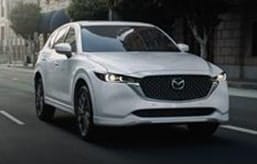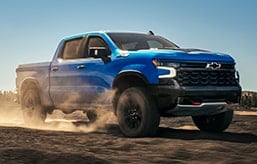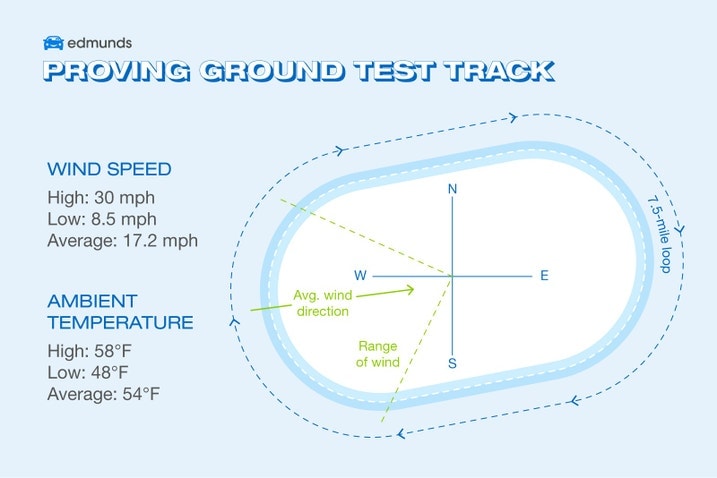- In February 2021, we reported that every Tesla failed to hit its EPA range estimate in Edmunds' real-world EV range testing.
- Tesla disputed our test results, stating that the full range of its vehicles' batteries was not being accounted for.
- Tesla argued that we hadn't accounted for the safety buffer: additional miles after an indicated zero that would see its vehicles match EPA figures.
- We assembled a group of five new electric vehicles from Tesla, Ford and Volkswagen to test Tesla's claim.
- Our tests showed that there is no fixed safety buffer. Even allowing for the additional miles recorded after an indicated zero, only two of the six Teslas we tested would hit their EPA figures in our real-world conditions.
Testing Tesla's Range Anxiety
Tesla challenged Edmunds' real-world range results. We put that challenge to the test.
In February 2021, we published our independent and continually updated Electric Car Range test. Our results were surprising, to say the least.
Some electric vehicles dramatically exceeded the EPA's range estimates, while others fell short. Most notably, all five Tesla vehicles we tested missed those estimates.
Needless to say, Tesla was not happy with our test results, and we received a phone call. Tesla's engineers disputed our figures. They argued that we'd underestimated their cars' true range because our test ran to an indicated zero miles rather than to a stop.
Am I Ready for an EV?
- EV ownership works best if you can charge (240V) at home or at work
- If you can’t charge at home, charging at a charging station could take at least 10x longer than at a gas station
- Adding a 240V home charging system could cost up to $1,600 or more
Tesla argued that even when the indicated range hits zero, there's still a safety buffer. The engineers reckoned that if you add this buffer, the distance measured to when the battery is spent, their cars would match the EPA results.
We needed to test Tesla's theory. Would their vehicles' buffer make a difference and see them hit their EPA range target? And does Tesla's buffer approach differ from that of other manufacturers? We headed to a vehicle proving ground to find out. The results may or may not surprise you.
Five EVs, one test: mapping out our plan ... safely
Our plan was to literally drive these EVs until they ran out of juice. This approach would allow us to measure the buffer — the difference between an indicated zero miles (displayed on each car's dashboard) and the true zero (when the battery runs out).
Given that driving a group of EVs to a stop on a public road is far from advisable, Edmunds' vehicle testing team rented a 7.5-mile-long closed-course oval at an unaffiliated automaker's proving ground in California's Mojave Desert. This allowed us to put Tesla's claim to the test in a more controlled environment, but one still subject to real-world conditions.
We brought three Teslas — a 2020 Model 3 Standard Range Plus, a 2021 Model 3 Long Range and a 2020 Model Y Performance — and two control vehicles: a 2021 Ford Mustang Mach-E and a 2021 Volkswagen ID.4, both of which comfortably exceeded their EPA estimates in our tests. Tesla loaned us the Model 3 Long Range, and Ford and Volkswagen loaned us their vehicles. The Model Y and Model 3 Standard Range Plus test cars are vehicles we own and were used for the original range test.
Driving to zero and beyond
Many range meters, for both gas and electric cars, take your recent driving habits into account when forecasting remaining range. So we needed to drive the cars exactly the same way in order to normalize all of our vehicles' range meters before they reached their indicated zero range. This would provide a level playing field.
This was our approach:
- We drove all the EVs at a 65 mph constant speed around the oval because that's the average speed limit for urban interstate highways in the U.S.
- We charged the EVs at the same outdoor ambient temperature overnight to 100% battery capacity and disconnected the charging cords at the same time.
- We correctly set each vehicle's tire pressures to manufacturer specifications.
- To further equalize our test measurements, we fitted Racelogic GPS-based data loggers to each car and used the vehicle's cruise control to maintain a true, GPS-verified 65 mph.
- We maintained these speeds in hour-long driver stints, with large 30-second gaps between vehicles to equalize the aerodynamic conditions, until all batteries were spent and the cars limped to a stop.
- Each driver set the automatic climate control to 72 degrees.
- All audio systems remained off.
- We did not plug in any cellphones or personal accessories.
- We even rotated the drivers through the cars at every stop.
It sounds like purgatory by boredom, but it was a small sacrifice for science.
Drumroll ... the results
Our graphic above highlights the distance each test EV traveled after reaching an indicated zero miles while still maintaining 65 mph. We consider this to be the more realistic endpoint because if a vehicle isn't able to maintain a safe highway speed (65 mph) on a flat road like at our test facility, then it's probably unsafe to be on public roads.
We also measured the distance each vehicle kept going even after it could no longer maintain 65 mph — the total distance traveled after the vehicle hit zero indicated range. This is what's measured by the EPA in its laboratory-based tests and was the basis of Tesla's challenge.
Mach-E
The Ford Mach-E had the shortest range reserve buffer in our test: It went 5.8 miles past its indicated zero range at a steady 65 mph. After it could no longer maintain 65 mph, there was a pretty consistent drop in speed over a relatively short 1.5 miles before the Mach-E came to a total stop at 7.3 miles. So Ford's indicated range of 0 is closer to zero.
We discussed the results with Jim Antal, Ford's Vehicle Energy Management manager. "We give [our customers] plenty of warning so we don't strand them," said Antal. "We don't want to tell them they only have 5 miles left when they have 40 miles left. So we have to walk that fine line between making sure we're as honest as possible with the customer about what they truly have and giving them plenty of opportunities to stay safe and finish [their trip]."
ID.4
The ID.4 had more energy in reserve than the Mach-E, going 9.4 miles past an indicated zero at 65 mph. Once it was unable to maintain 65 mph, it continued to lose a couple of mph about every minute. We kept driving and made it a total of 12.9 miles beyond zero, just feet ahead of where the Model Y stopped.
Commenting on the buffer, Matthew Renna, vice president of e-mobility, Volkswagen Group of America, said, "It is standard practice from most [auto]makers to build a small buffer into the batteries, for obvious reasons, so we weren't surprised by the result. It is analogous to ICE [internal combustion engine] vehicles, where automakers usually have some fuel in reserve when the car shows zero."
Model Y
This Tesla Model Y's range buffer when going 65 mph — 10.3 miles — was a bit more than the ID.4's. But after it dropped below 65 mph, there was a steady decline in speed over 2.3 miles to a full stop at 12.6 miles, 0.3 mile less overall than the VW. There were a few warnings during the final mile, including one indicating the larger rear motor was disabled, likely to conserve energy.
Model 3 Standard Range Plus
The Model 3 Standard Range Plus had a bigger buffer than the Mach-E, ID.4 and Model Y. After reaching an indicated zero range, we made it 12.6 miles traveling at 65 mph. The car gradually slowed down from 65 mph over the next 5 miles. It stopped after a total of 17.6 miles past an indicated zero with a handful of low-charge notifications on the way. Just before halting, a final warning popped up that said "Battery charge level too low" and the car was unable to drive.
Model 3 Long Range
Armed with its higher-capacity battery, the Model 3 Long Range had the most buffer range in reserve. It went 22 miles at 65 mph after an indicated zero range and notched a final distance of 25.9 miles. The Model 3 issued a series of warnings when its indicated range reached zero miles and then fell silent as it continued to cruise. When the vehicle began to gradually slow, however, alerts returned in a flurry — at one point they popped up too quickly to read while simultaneously guiding a hampered vehicle off the road safely.
"It's important to communicate that the range remaining is a software estimation of energy left in the pack; there's obviously no float-based fuel gauge like there is in a gas tank," said Tesla's engineers about the buffer on all of the automaker's cars. "We do this estimate conservatively so there's always some energy left to help get drivers to the next charging point when needed."
Validating Tesla's challenge on real-world roads
With our new fresh findings on battery buffers, we figured we needed to give the Teslas another run on our official Edmunds EV range loop. This was our control test, to validate what we discovered at the test track.
We drove on our standardized test route with the Tesla-owned Model 3 Long Range and the Edmunds-owned Model Y Performance. We charged their batteries to 100% and spent the entire day running them down to the end of their battery life. The average ambient temperature between our test day at the proving ground and the day on our EV range loop differed by just 1 degree.
Our Model Y went the exact same distance of 263 miles (measuring at our usual cutoff) as it did during its previous test in December of 2020. This was a satisfying confirmation of the validity of our real-world EV test methodology.
Our assumption was that the buffer range we saw at the proving ground would be the minimum we'd have in the bank since most electric vehicles are less efficient at highway speeds than in the city. But as we neared those target numbers, we started receiving "low-battery/charge soon" warnings earlier than expected.
We were driving purely at city speeds (which is below 50 mph on roads with stoplights) by the time each vehicle reached zero indicated miles of range. And, to our surprise, both Teslas ended up with shorter buffer ranges than at our proving ground's closed facility test.
We contacted Tesla to discuss these findings. The automaker told us that there was no fixed range buffer and that it would be impacted by the following:
- "Near-past conditions — ambient temperature and driving style leading up to the final few miles."
- "Instantaneous conditions — there's a strong interaction between speed/acceleration and the battery's ability to provide its last little bit of energy."
Tesla engineers concluded that "for these reasons, the buffer cannot be defined exactly to a number every time — it will change based on external conditions, driving profile, etc."
Our key takeaways
- Some Teslas (2021 Tesla Model 3 Long Range, 2020 Tesla Model S Performance) do meet their EPA range estimates on the Edmunds EV range loop but with the caveats that they:
- are charged to 100% battery capacity, which Tesla does not recommend for daily use;
- are driven conservatively and without too many ancillary power draws, such as strong climate settings;
- are driven in a temperate climate; and
- are driven beyond the point where indicated range drops to zero.
- Other Edmunds-tested Teslas (2020 Model 3 Standard Range Plus, 2020 Model Y Performance, 2018 Tesla Model 3 Performance) won't hit their EPA range estimates even following all of the above conditions.
- There's no consistent way to determine exactly how much an EV's buffer range will be. While some Teslas appear to have long range buffers beyond zero, the range of others is comparable to the range of alternative EVs we've tested.
Edmunds says: What does this mean for you?
Our answer to Tesla's dismay with our initial results is that, yes, two of the automaker's vehicles can match the EPA's range estimates in the Edmunds EV range test. But that's only under specific circumstances and by driving each vehicle past zero indicated miles of range.
The majority of Teslas we tested, four of the six, do not meet their EPA estimates, even allowing for a safety buffer.
We'd also argue that the point is academic. For you as an EV driver or future EV driver, it's unlikely you'd expect an EV's buffer range to be included in the EPA's range estimate. A buffer is meant to provide an extra cushion or protection to avoid an unwanted outcome. Moreover, it's difficult to know, or plan for, how much extra range there is beyond an indicated zero or whether you'll be able to maintain your current speed.
Here is also what you need to keep in mind:
- Many factors are at play that can affect an electric vehicle's range including driving style, terrain and weather.
- Regularly dipping into a vehicle's buffer range increases charging time, decreases charging efficiency and could decrease battery longevity.
We admit our standardized Edmunds EV range test isn't perfect — no test is. But it is a good approximation of what you might expect to achieve in real-world driving and, we believe, a complement to the EPA's current laboratory-based range figures. And we'll continue to test to an indicated zero because we'd never advise EV consumers to drive their vehicle beyond this point.
As the technology evolves and more people choose electric cars, it's critical that consumers have real-world measures that are relevant, trustworthy and believable.









 by
by